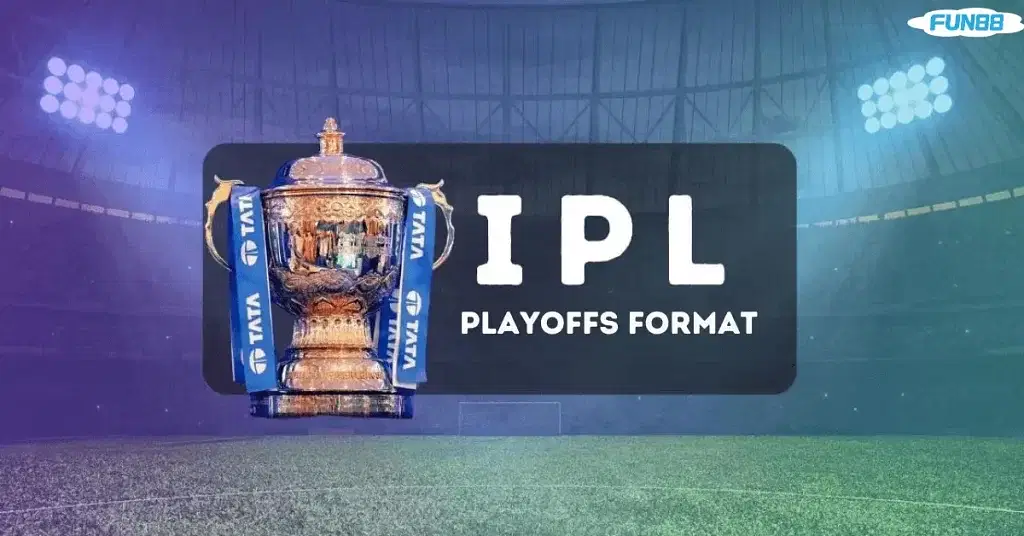Just like ICC events, there was a time when the Indian Premier League followed a traditional approach to finding its champions. Earlier than in 2010, the top four teams from the league stage would advance to semi-finals and winners fighting for the championship title. However, there was no such IPL playoffs format as it is today. However, a more equitable playoff structure was adopted from the 2011 season onwards. This has stayed in place as the current form and performance with which the IPL champion is decided since then.
What are the Rules of the IPL Playoffs Format?
The IPL’s playoffs have been deliberately designed to focus on consistency more than anything else. It can be argued that this is fair given that teams with a higher number of wins throughout the league stage should be given more chances to prove themselves as opposed to those who manage to scrape through at the eleventh hour.
This rule ensures that the top two teams on the IPL points table are given another chance to play in the final, thereby introducing three elimination matches before the championship final instead of just two.
Starting off with ‘Qualifier 1’ which pits together first and second best sides from the league stages, this game determines who qualifies directly for finals with whoever loses taking part again in ‘Qualifier 2’.
After ‘Qualifier 1’, there is an ‘Eliminator’ where the third and fourth meet each other. The loser here goes on to play against the loser from ‘Qualifier 1’ in ‘Qualifier 2’ for one place left in the finals.
Fundamentally, it provides an opportunity for ‘Qualifier 2’, which became a lifeline for one unfortunate team that lost ‘Qualifier 1’, hence leading to a winner of Qualifier 1 facing off against a losing side from Qualifier 2 thus determining champions if possible.
Notably, under such a playoff arrangement, teams positioned two and three have double opportunities at reaching the grand finale, whilst numbers four and five only get one shot.
The structure was perfectly shown by the IPL 2023 Playoffs. Eventually, Chennai Super Kings (CSK) won against Gujarat Titans during “Qualifier 1”, securing their place in the finals, but GT bounced back after beating Mumbai Indians during “Qualifier 2”, therefore earning them a rematch against CSK for the title match.
Lastly, MS Dhoni led CSK through winning their fifth IPL trophy during finals; these reflected how much fun playoff formats can be when you see competitiveness like this by the most dominant team as well as led by captain MSD.
Related Read: Who is the Baap of IPL?
Why is the IPL Playoffs Format needed?
So, one might feel: What is even the need for this different format for the IPL play-offs? Why not do what everyone else is doing across the globe?
Believe it or not, the IPL playoffs format makes the last stage of the league so much more exciting. The more complex it gets; the better it becomes as far as watching is concerned.
Furthermore, the format of the IPL playoffs is a system that encourages regularity. The reason behind providing an extra opportunity for the Top 2 teams in the IPL points table was to encourage consistency among teams.
When you have found yourself at the top of the table, it means you have done many things right. You won most of the matches, took care of your team’s net run rate and also managed some more things around it to be where you are right now.
Why is finishing in the Top 2 a game-changer in IPL 2024?
Every team wants to get into the playoffs, but there is a significant advantage for those who win one of the top two spots.
This explains why:
Second Chance: The biggest benefit is an extra shot at reaching the final. The top two teams get two chances—Qualifier 1 and Qualifier 2—as opposed to one each for teams ranked three and four. So even if they lose once in the initial play-off round, they will not be immediately out.
What about other leagues?
So what about other major T20 leagues? How do they go about their playoffs? Are they the same as the IPL playoffs format? Check these out:
Big Bash League
Five teams qualify after the league stage of the Big Bash League, from which there are different stages leading to semi-finals or finals.
Eliminator: There are no clashes between the third-placed side and fourth-placed ones like we see in the Indian Premier League. Rather, there are battles between fifth-ranked sides and fourth ones fighting for survival in ‘Eliminator’.
Extra Chance: Additionally, winning ‘Eliminator’ does not end everything! Instead, they get another chance by playing against the third-placed team from their league stage during the “Knockout” match while the loser goes home straightaway.
Loser Goes Home: Unfortunately, after losing the Eliminator match, a team has reached the end of their Big Bash League journey.
Qualifier 2: The loser of the qualifier plays the winner of the Eliminator match. This is a do-or-die battle.
The IPL Final: The winner of the challenger match takes on the victor of Qualifier 1 in the grand final for the Big Bash League title! The two best IPL teams of the tournament will fight it out here to get their hands on that trophy.
Key Differences with IPL:
There are some differences between this format and the IPL playoffs format.
More Teams Involved: In the Big Bash League, five teams proceed to playoffs out of eight as compared to four out of ten in IPL.
Second Chance Structure: If you lose in Qualifier 1, you get another chance to reach finals in Qualifier 2, unlike in BBL, where losers go through Challenger.
This arrangement allows more surprises and exciting comebacks during Big Bash League’s playoffs than that currently used by IPL.
Pakistan Super League
PSL follows the same method as the IPL playoffs format. However, here, only 6 teams participate in the PSL league. Out of these, 4 qualify for the playoffs.
After this, the top two teams in points play a qualifier. The winner of this game goes to the PSL Final. However, the loser of the 1st qualifier faces the eliminator winner.
In Eliminator matches, the third and fourth teams of the points table play against each other. Then, the PSL final, in which the season’s PSL champion will emerge, is played between Qualifier 1 and 2 winners.
Also Read: Highest Strike Rate in IPL – Top Five Batsmen
The IPL Playoffs Format
Earning a Playoff Berth: After the league stage (where all 10 teams play each other twice), the top four teams, based on points (wins, losses, and net run rate), battle it out for the IPL trophy.
The Three-Match Showdown:
- Qualifier 1 (Double Chance for Top Teams): The top two teams from the league stage clash. The winner books a direct ticket to the final, while the loser gets a second chance through Qualifier 2.
- Eliminator (Survival of the Fittest): The third and fourth-placed teams fight it out. The winner gets a shot at redemption in Qualifier 2, while the loser is eliminated from the tournament.
- Qualifier 2 (Last Stand): The winner of the Eliminator and the loser of Qualifier 1 face off. The victor advances to the final, while the loser’s journey ends.
The Grand Finale: The ultimate showdown! The winners of Qualifier 1 and Qualifier 2 battle it out for the coveted IPL title.
- The top two teams have a double chance to reach the final, potentially facing each other in both Qualifier 1 and the final.
- The Eliminator offers a lifeline to the third and fourth-placed teams.
- Each match carries immense pressure, making the playoffs incredibly exciting.
Additional Factors at Play
- Team Momentum: Teams carrying winning form from the league stage often continue their dominance.
- Player Form: Key players’ form significantly impacts performance. Injuries can disrupt team strategies.
- Home Advantage: Playing in familiar conditions with strong home support provides an edge.
Conclusion
The IPL playoffs format balances rewarding consistency and allows for dramatic comebacks. Understanding it increases your enjoyment of the high-pressure matches and the chase for the IPL trophy! The IPL 2024 has already started and teams are looking more focused to win than ever.
Star it if you find it helpful.

